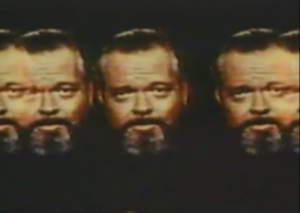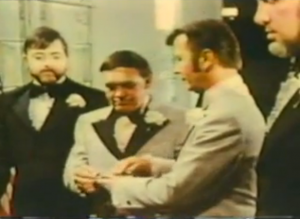
“Our modern technology has achieved a degree of sophistication beyond our wildest dreams. But this technology has exacted a pretty heavy price. We live in an age of anxiety, a time of stress. And with all our sophistication we are in fact, the victims of our own technological strength. We are the victims of shock … of future shock.”
No, this isn’t a quote from a Huffington Post column on the Facebookization of modern communication. Nor is it pulled from an academic treatise on the phenomenologies of post-industrial existence. This statement was made by Orson Welles in the 1972 futurist documentary Future Shock, and, unlike some of the more dated elements of 1970s educational films, Future Shock remains shockingly current in verbalizing the concerns and anxieties that come along with rapid societal and technological change.

1970s Visions Of A Dystopic Future
The 1972 documentary Future Shock was created as a companion piece to the 1970 book of the same name by author and social theorist Alvin Toffler. Toffler’s Future Shock posited that the accelerated rate of technological change in the modern world was leading to a largely dystopic and alienated society. The book is hugely iconic, having sold over 6 million copies worldwide.
http://www.youtube.com/watch?v=vVJrJk3q3MA
The educational film adaptation is useful in offering an audiovisual portrait of economic and social concerns of the 1970s, and from this, we can better understand the paradigms of consumerism and technology that we trade in today. Beyond that, it offers up intriguing archival scenes of 1970s artificial limb innovations, modular architecture, and transient free-lovin’ hippies, albeit offered as examples of precursors to a dystopic future of terrifying artificial intelligence and distance from the traditional morality of earlier decades. “The momentum is established, but the direction is up to us,” warns Welles. “Is there danger in the path we are taking?”
Orson Welles As Host And Narrator

Welles gamely engages with the hyperbole of the narration, sternly discussing how technological innovation has led to broken communities, morally apathetic individuals, and disposable objects. Director Alexander Grasshoff uses his host as a voice of authority and inciter of paranoia, imbuing the film with the same kind of gravity and solemnity as Welles’ early and iconic The War of the Worlds broadcasts. But certainly, the visual element carries with it some elements of the kitsch – as current as Welles’ theoretical concerns sound, it’s hard to reconcile them with some of the now-irrelevant or dated issues (see again: 1970s artificial limb innovations, modular architecture, transient free-lovin’ hippies).
A Futuristic And Fusionist Musical Score
Future Shock’s score was created by Gil Mellé, a baritone saxophonist and film composer who spent the 1970s and 1980s experimenting on musical arrangements for film and television that fused jazz, electronic music, and avant garde classical minimalism. His work on the theme for the television program Night Gallery was notable for its use of an all-electronic score mimicking the conventions of an orchestra, and he specialized in science fiction and horror films such as The Andromeda Strain and The Sentinel. In Future Shock, the combination of strings, horns, and electronics ebbs and flows, switching from the urban groove of funk to the industrial Moogisms of early modern electronic music to create moments of urgency and mystery.

Indiana University And Orson Welles
This 16mm film is part of the recently acquired Oregon Collection of 12,000 educational films. In addition, it is significant to the Indiana University Libraries Film Archive and Indiana University in general because of its relation to the greater collection of Orson Welles materials that are housed here, from the papers and lacquer discs at the Lilly Library to the film elements at the IULFA. In watching this legendary actor and personality grapple via performance with the social concerns of the day, we are given a deeper understanding of both the Welles himself, as well as historical and current imaginings of change and innovation in society.
- Read more on Preserving Orson Welles at Indiana University here.
- Learn more about the Oregon Collection at IULFA here.
- See the digitized educational guide to the film at our Facebook page:

~Josephine McRobbie
Leave a Reply